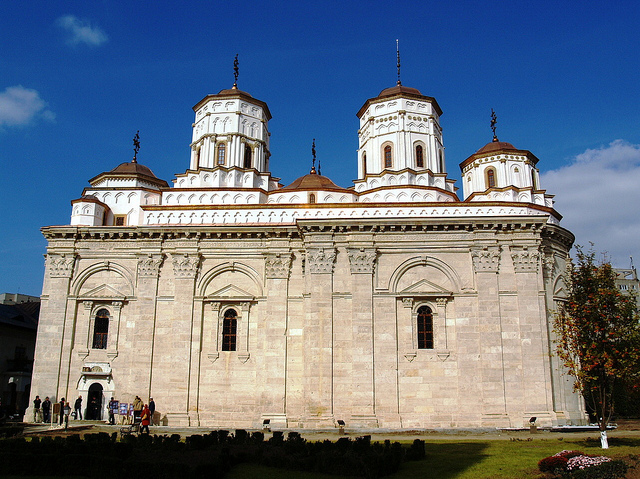Monastery in Iasi and teacher from Satu Mare, Romania win EU cultural heritage awards


Romania has two winners in the annual EU cultural awards. Run by Europa Nostra in partnership with the European Commission, the competition juries have picked 28 winners in four categories. Romania’s two winners are the Golia Monastery in Iasi, in the conservation category and teacher Paraskevi Kovacs from Satu Mare in the dedicated service section.
An awards ceremony will be held on June 1 at the Jerónimos Monastery in Lisbon, where six grand prizes will be announced. "Europe's cultural heritage is unique in the world. The European Union Prize for Cultural Heritage highlights excellence in conservation, research, education, training and awareness raising, as well as dedicated service by individuals and groups. I would like to warmly congratulate this year's winners for reminding us of our wonderfully rich and varied heritage that we should never take for granted. It is in our trust for future generations," said Androulla Vassiliou, European Commissioner for Education, Culture, Multilingualism and Youth, who will be among the great and the good at the awards ceremony.
Celebrated tenor Placido Domingo, who is the President of NGO Europa Nostra, highlighted the importance of partnership with the Commission and the vital role of EU funding for the preservation and promotion of Europe’s cultural heritage.
Judges described the Golia Monastery, in North East Romania, as one of Europe’s most complex surviving monastic ensembles. Built by Vasile Lupu and his wife, Ecaterina Cercheza, between 1650 and 1652, the monastery has a uniquely eclectic mix of architectural styles. Russian and Eastern influences can be seen and the pilasters of the exterior walls bring Italian Baroque to the mix. Judges recognized the restoration work, which has preserved the monument and returned it to its former glory, as well as the important role it plays in tourism and education in the area. The preservation of the traditional monastic way of life was also praised.
Paraskevi Kovacs, a teacher from Satu Mare and a winner in the dedicated service section, has devoted 40 years to recording and preserving cultural artefacts from the area.
This year’s 28 winners were selected from 226 projects and are split into four groups – conservation, research, dedicated service, and education, training and awareness-raising. The six 'grand prix' winners will receive EUR 10,000 each.
Europa Nostra is an NGO that supports cultural heritage. It represents 250 non-governmental and non-profit organisations from more than 50 European countries and is supported by over 150 associate public authorities and corporations and more than 1500 individual members. Europa Nostra is committed to safeguarding Europe’s cultural heritage for present and future generations.
According to Europa Nostra, “the cultural and creative industries provide jobs for 8.5 million people in the EU and contribute up to 4.5 percent to Europe's GDP. Spending on conservation of cultural heritage by public and private bodies is worth an estimated EUR 5 billion a year.” The EU has made significant investments in cultural heritage across the union – EUR 30 million in co-financing heritage-related projects since 2007.
Liam Lever, liam@romania-insider.com












